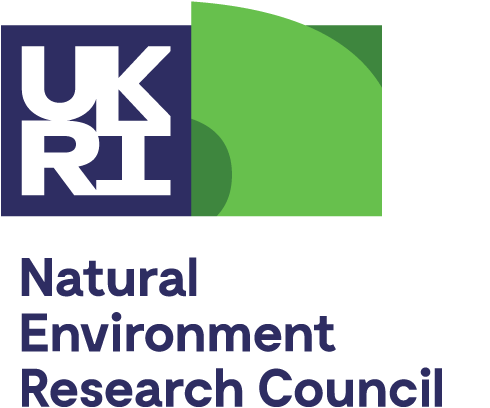SoS Rare 1 year meeting
It's been a busy year for SoS Rare! Over the past two days we have had our 1 year catch-up meeting, hosted at the BGS, and it has been an interesting one. For this blog entry, various early-career researchers from each of the work-packages (WPs) summarise what has been happening in their sub-groups.
The aims of WP1 are to understand the fundamental properties of hard rock REE deposits such as the temperature and composition of REE-depositing fluids. The team have been busy carrying out fieldwork in Namibia and following up on that work with subsequent petrography and mineralogy. Delia Cangelosi has identified interesting fluid inclusions in fluorite in the Okorusu carbonatite samples, and is working on the mineralogy. She is also putting together a paper on the Huanglongpu carbonatite, where sulphate minerals are associated with HREE mineralisation. Sulphate is also the flavour of the month for Sam Broom-Fendley who has found unusual sulphatian monazite in silicified samples from the Eureka carbonatite. Work is also ongoing on burbankite-bearing rocks and on quartz-rich material from Lofdal. Straddling WP1 and WP2, Eva Marquis showed us images of her samples from the Ambohimirahavavy complex in northern Madagascar. A successful international meeting on the thermodynamics of REE minerals was hosted in Leeds in January. A large part of the discussion was directed towards which REE minerals were the most important to obtain thermodynamic data for. This notion continued at this meeting, where we discussed overlaps with the theoretical modelling team and the temperature range of interest for modelling REE-bearing hydrothermal solutions.
WP2 is aiming to determine formation and exploration targeting of ion adsorption deposits. To achieve this the characteristics and genesis of REE-enriched weathering profiles, and the behaviour of REE on mineral surfaces are being studied. Following a short but highly successful reconnaissance field trip to the Ambohimirahavavy Alkaline Complex, work has started on understanding how the REE are adsorbed to clay minerals and characterisation of the bedrock lithologies. Guillaume Estrade has commenced leach experiments on the Ambohimirahavavy laterite profiles. These have shown that there are easily leachable REE within these profiles, which allows us to check off the first milestone that there is sufficient REE within the profiles for the purpose of this study. The X-Ray Photoelectron Spectrometer (XPS) is now up and running at the University of Brighton. Analyses by this instrument provides much needed information on the types of chemical bonds present in materials. Such analyses will indicate how the REE are bonded to clays and other minerals in the laterite profiles. Preliminary investigations by Guillaume Estrade are currently underway with more results expected soon. To aid in understanding the weathering conditions during the formation of the ion adsorption deposits, clay separates are currently being prepared for oxygen and hydrogen stable isotope analysis. Bulk rock geochemical analysis will also begin soon and add to the preliminary PXRF data shown at the annual meeting. There will be a second field trip to Madagascar in the autumn, which will expand the study area to other complexes in the Ampasindava Alkaline Province to see if REE mineralisation is unique to the Ambohimirahavavy Complex or if there is similar mineralisation elsewhere.
WP3 focuses on the geometallurgy and extraction of REE deposits and possible improvements to existing extraction methods. The team in WP3 is spread over a number of institutions with main the main groups located at Leeds and Exeter (CSM). In Leeds, Animesh Jha and Sergio Sanchez Segado have been pushing forward working on the movement of REE in ionic liquids, with the exciting development of a new PhD student starting in September. Sergio Sanchez Segado showed us some of his initial findings, highlighting future areas of investigation that will be followed by the new researcher. This work is vital to link into modelling of REE mobility with classical simulations. Work at Camborne School of Mines has focused on REE processing via froth flotation. Successful froth flotation depends to a large part on the contact angle between a bubble and a mineral surface. Investigating this parameter allows flotation to be specialised for the ore. Initial test work on contact angles has been conducted by Camilla Owens and a meeting has been set up in July for the groups from Exeter and Leeds to meet to discuss further collaborative efforts.
WP4 focusses on the leaching of REE from low grade ion adsorption clay type deposits, focussing on chemical and biological processes for the remobilisation of REE. The conceptual model for WP4 has been completed, and it will continue to evolve throughout the project as more information is learnt. The conceptual model helps guide the experimental work to understand and parameterise the most important, unknown aspects of REE transport in low grade REE ion adsorption clay type deposits. This information is then fed into the complete reactive transport model at the end of WP4. The direction of WP4 is closely linked to the characterisation of the material collected from the studied ion adsorption clay type deposits that is being conducted in WP2 and their finding will also help in the experimental design. The current planned experiments are going to consist of setting up packed columns experiments to understand the role of microbes in mobilising REE from the ore material. Preliminary work has been completed to test the hydraulic properties of the clayey material. The practicalities of conducting leaching experiments with microorganisms are under continual development, with a poster being presented with preliminary investigations. Finally the progress in isolating and screening microorganisms from samples from the first field trip to Madagascar was presented, showing a range of potentially useful metabolic pathways. As more information becomes available from WP2 on the material mineralogical and geochemical characterisation of the ion adsorption clay type deposits the more suitable metabolic pathways can be chosen.
We are grateful to the BGS for hosting us, and to the BGS team and Ed Loye for organising. The catch-up meeting next year will be in St Andrews.
Sam Broom-Fendley, Eva Marquis, Milly Owens and Megan Barnett 31 May 2016




